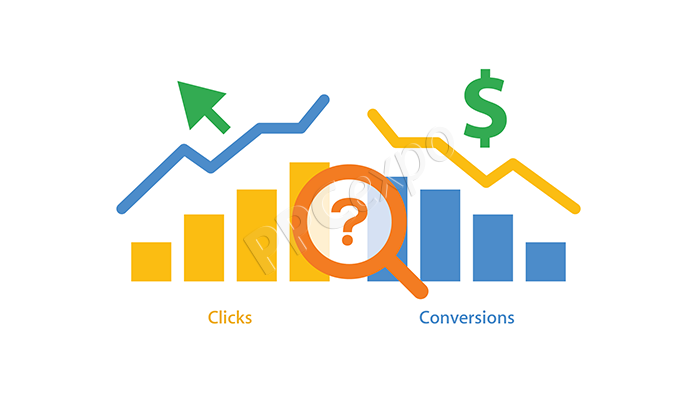On-Page SEO Optimization – In the ever-evolving landscape of digital marketing, search engine optimization (SEO) remains a cornerstone for businesses looking to enhance their online presence. Among its various facets, on-page SEO optimization stands out as a fundamental strategy for improving website visibility and ranking on search engine results pages (SERPs). In this comprehensive guide, we delve into the intricacies of on-page SEO optimization, exploring its importance, key components, best practices, and how to implement them effectively.

Understanding On-Page SEO Optimization
On-page SEO refers to the practice of optimizing individual web pages to improve their search engine rankings and drive organic traffic. Unlike off-page SEO, which involves external factors like backlinks and social signals, on-page SEO focuses on optimizing elements directly within the website itself. By optimizing these elements, businesses can enhance their website’s relevance, authority, and usability, thereby increasing their chances of ranking higher in search engine results.
Key Components of On-Page SEO
1. Content Optimization
Content lies at the heart of on-page SEO optimization. High-quality, relevant, and engaging content not only attracts visitors but also plays a crucial role in search engine rankings. When optimizing content for SEO, consider the following:
Keyword Research: Identify relevant keywords and phrases that align with your target audience’s search intent. Tools like Google Keyword Planner, SEMrush, and Ahrefs can help you discover valuable keywords with high search volume and low competition.
Content Quality: Create comprehensive, informative, and unique content that addresses the needs and interests of your audience. Aim for longer-form content that provides in-depth insights and value.
Keyword Placement : Strategically place your target keywords in key areas such as the title tag, meta description, headings (H1, H2, etc.), and throughout the body of the content. However, avoid keyword stuffing, as it can have a negative impact on user experience and SEO.
2. Meta Tags Optimization
Meta tags are HTML elements that provide information about a web page to search engines and website visitors. The two most important meta tags for on-page SEO optimization are:
-Title Tag: The title tag is a concise and descriptive HTML element that specifies the title of a web page. It appears as the clickable headline in search engine results and should accurately reflect the content of the page while incorporating relevant keywords.
Meta Description: The meta description is a brief summary of the web page’s content that appears below the title tag in search engine results. While meta descriptions do not directly impact rankings, they can influence click-through rates by providing users with a compelling reason to visit your site.
3. URL Structure
A clear and concise URL structure can improve both user experience and search engine crawlability. When optimizing URLs for on-page SEO, follow these best practices:
Keep it concise and descriptive: Use short, descriptive URLs that accurately reflect the content of the page. Avoid using unnecessary parameters or cryptic strings.
Include keywords: Incorporate relevant keywords into the URL whenever possible, but keep it natural and readable for both users and search engines.
Use hyphens to separate words: Use hyphens (-) to separate words in the URL, as search engines recognize them as word separators. Avoid using underscores (_) or spaces.
4. Heading Tags Optimization
Heading tags (H1, H2, H3, etc.) are HTML elements used to structure and organize content on a web page. They not only enhance readability but also provide search engines with valuable context about the page’s content hierarchy. When optimizing heading tags for on-page SEO:
Use one H1 tag per page: The H1 tag should contain the primary keyword or the main topic of the page. It serves as the headline that summarizes the page’s content.
Organize content with H2-H6 tags: Use H2-H6 tags to structure subheadings and organize content into logical sections. Incorporate relevant keywords where appropriate to provide additional context to search engines.
5. Image Optimization
Images play a crucial role in enhancing the visual appeal of a web page and engaging users. However, they also present an opportunity for on-page SEO optimization through:
– File name optimization: Use descriptive file names that include relevant keywords to improve visibility in image search results. For example, instead of “IMG123.jpg,” use “on-page-seo-optimization.jpg.”
– Alt text optimization: Alt text (alternative text) provides a textual description of an image, which is displayed if the image fails to load or for visually impaired users. Incorporate relevant keywords into the alt text to improve accessibility and enhance SEO.
Implementing On-Page SEO Best Practices
Now that we’ve covered the key components of on-page SEO optimization, let’s explore how to implement these best practices effectively:
1. Conduct a Comprehensive SEO Audit
Before diving into optimization efforts, conduct a thorough SEO audit of your website to identify areas for improvement. Use tools like Google Analytics, Google Search Console, and third-party SEO audit tools to analyze key metrics, identify technical issues, and uncover optimization opportunities.
2. Develop a Content Strategy
Create a content strategy that aligns with your target audience’s interests, preferences, and search intent. Conduct keyword research to identify relevant topics and incorporate them into your content plan. Focus on creating high-quality, evergreen content that provides value to your audience and encourages engagement.
3. Optimize On-Page Elements
Optimize on-page elements such as title tags, meta descriptions, URLs, heading tags, and image alt text based on your keyword research and content strategy. Ensure that these elements accurately reflect the content of the page and incorporate relevant keywords in a natural and user-friendly manner.
4. Improve Page Load Speed
Page load speed is a critical factor that affects both user experience and search engine rankings. Optimize your website’s performance by minimizing server response times, leveraging browser caching, compressing images, and reducing unnecessary code. Tools like Google PageSpeed Insights can help identify areas for improvement and provide actionable recommendations.
5. Enhance Mobile Responsiveness
With the increasing prevalence of mobile devices, ensuring that your website is mobile-friendly is essential for SEO success. Adopt a responsive web design approach that adapts seamlessly to various screen sizes and devices. Test your website across different devices and screen resolutions to ensure optimal performance and user experience.
6. Monitor and Analyze Performance
Regularly monitor and analyze your website’s performance using tools like Google Analytics and Google Search Console. Track key metrics such as organic traffic, keyword rankings, click-through rates, and conversion rates to gauge the effectiveness of your on-page SEO efforts. Use this data to identify trends, measure progress, and make informed optimization decisions.
Conclusion
On-page SEO optimization is a foundational strategy for improving website visibility, attracting organic traffic, and enhancing user experience. By focusing on key elements such as content, meta tags, URL structure, heading tags, and image optimization, businesses can improve their search engine rankings and drive sustainable growth online. By implementing the best practices outlined in this guide and staying abreast of industry trends and algorithm updates, you can unlock the full potential of on-page SEO optimization and achieve your digital marketing goals.
Future of Digital Marketing: Trends, Technologies and Strategies
Future of Digital Marketing: Trends, Technologies and Strategies

Pingback: Facebook Ads : How to Target the Right Audience in Meta Ads - Digital Social Solution